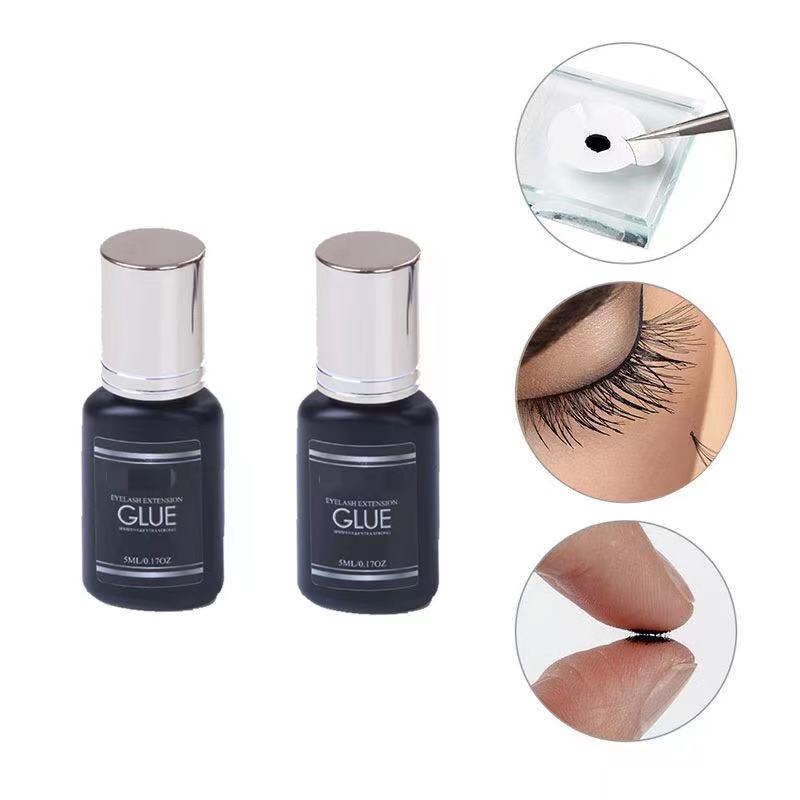M-F: 9 A.M - 5 P.P. EST
ADD:Licang District, Qingdao City, Shandong Province,China 266000
Whatsapp:+8615954188567
E-mail:linda@selfelashes.com
Jan. 3rd 20204 min read
USING THE STRONGEST GLUE - A LIFE SAVER, OR A RECIPE FOR DISASTER?
Whether you are new to the lash business or are an experienced lash artist you must have heard or asked this one particular question: “What’s the best lash glue?”
I know I have.
I have asked and have been asked. Back then when I wasn’t aware how important it is to know all the things that are responsible for good retention (as this is in fact what we are looking for, right), I was always keeping one eye on new products, thinking the best glue is yet to come. But as with life in general, everything you need right now, is already here for you - the same goes for the lash glue.
Confused? Let’s dive into the pursuit for Mr. Right - the one that will keep you and your clients happy and satisfied.
I’ll be honest - the truth is that there's no singular ‘best’ lash glue. All glues are strong and capable of lasting 5+ weeks on the lashes. Even more confused? Good. This means you are taking all words into consideration! Which is exactly what you should be doing when seeking for perfect adhesive to work with. You should consider everything that affects the retention of the eyelash extensions.
Of course you should put attention to all of them but let’s first discuss the Temperature and humidity of your work environment.
All lash adhesives contain the same ingredients: cyanoacrylate, stabilisers and black pigment (if the glue is black). Cyanoacrylate is the one that is responsible for creating a quick bond, while stabilisers are there to reinforce this bond making it strong and long lasting. The more cyanoacrylate present in the glue, the less stabilisers it contains. This means adhesives with more cyanoacrylate dry more quickly. It is that simple and it goes for all lash adhesives, no matter the brand. So what exactly is it that’s making them different to one another?
It’s how they react to the environment! In order to cure, cyanoacrylate needs water (humidity) which it attracts from the environment and client’s lashes. If the humidity in your room is high, your glue will dry quickly, but if the humidity level is low, the adhesive will dry slowly. Notice when we talk about humidity level, we are referring specifically to the humidity that is in your workspace, not the one your smartphone is showing you for the weather outside - invest in a hygrometer for most accurate temperature and humidity readings.
Ready to sprinkle some water drops onto client’s lashes in order to make your adhesive work faster? Not so fast! If you happen to add too much moisture, the adhesive will shock polymerise, making the bond with lashes fragile and easy to break. How do you know you’ve got shock polymerisation? The glue will turn white on the lashes! Maybe you’ve seen this before if a client’s eyes have watered?
Now imagine someone buying a quick drying glue and using it in a beauty room that has 60% or even higher humidity level. That would mean this already quick drying adhesive will become even quicker - approximately a full second quicker! If this person is an experienced lash technician, this would probably be no problem. But if they are less experienced, then this situation would most likely bring about poor retention and complaints. This is because their work speed is simply not in tune with the speed of the glue and with the humidity level.
What about the room temperature - how does this affect lash retention? Will a higher temperature mean a faster drying time? The fact is that cyanoacrylate does not love high temperatures - at 80 degrees Celsius it loses half of its strength. Have you ever had a client come back with barely any lashes and after a little investigation you find that they regularly use the sauna, take part in spin classes, or play squash on the weekends? There’s your answer - the glue is reacting to its environment, even after curing!
Most adhesives perform best within 45 -55 % humidity, and 20 – 22 degrees Celsius (68-72F). As with all things in life, there are always exceptions to the rule! Luckily some adhesives have a wider working range which is very convenient if you have problems with controlling your work space, for example if you are working within a hair-dresser’s. Our Flexie adhesive is a perfect solution! As the name suggests this adhesive is very flexible when it comes to working conditions. It works in humidity levels that range from 40% to 70% and between 18 to 22 degrees Celsius temperature, forming an elastic bond which I found out was a real lash saver with clients who go to hot yoga a few times a week! If you prefer to work more slowly, Velvet will be your best friend, and if you’re very fast (like, SUPER fast) Royal Bond will be a game changer!
What if your conditions are perfect for the glue, but you’re STILL seeing retention issues? Well, it could be drying too fast. Have you ever brushed through a set of lashes and seen your extensions simply pinging off? This is because the glue is beginning to cure before it can form a strong bond between the extension and the natural lash. If you experience issues with a glue, look for a slower drying time - this will give you time to place and correct the extension without sacrificing retention time.
Hopefully now you can understand why there really isn’t only one best lash glue out there, and why we might ask you more questions when you ask us which is the best glue. When choosing your glue, you should consider your working environment conditions and also how experienced a lash technician you are, rather than looking for the strongest, fastest glue.
Sending you lots of love and lashes,
Selfelashes Brand
WHATSAPP USto get SELFE LASHES VIP DISCOUNTS

RECENT POSTS
Sign up to get the latest on sales, new release and more...

Linda Liu

Tiffany Li

Doris Wang